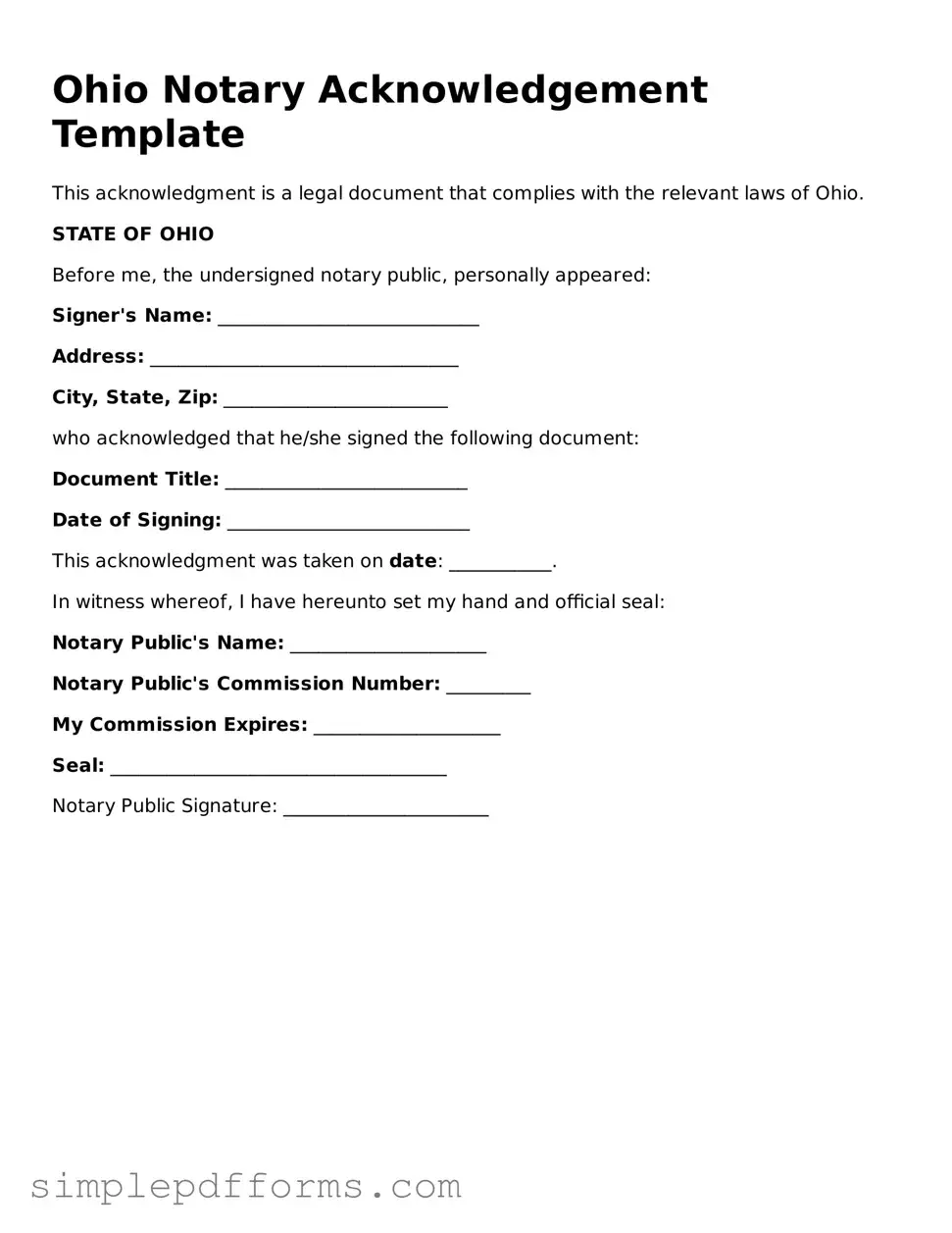Attorney-Verified Notary Acknowledgement Document for Ohio State
The Ohio Notary Acknowledgement form is a document that verifies the identity of a signer and confirms that they willingly signed a document. This form is essential for ensuring the authenticity of legal documents in Ohio. Understanding its purpose and requirements can help you navigate the notarization process smoothly.
Open Notary Acknowledgement Editor Now
